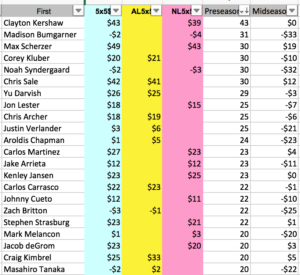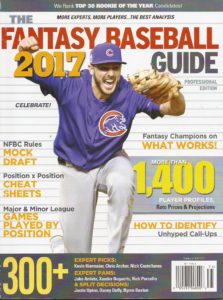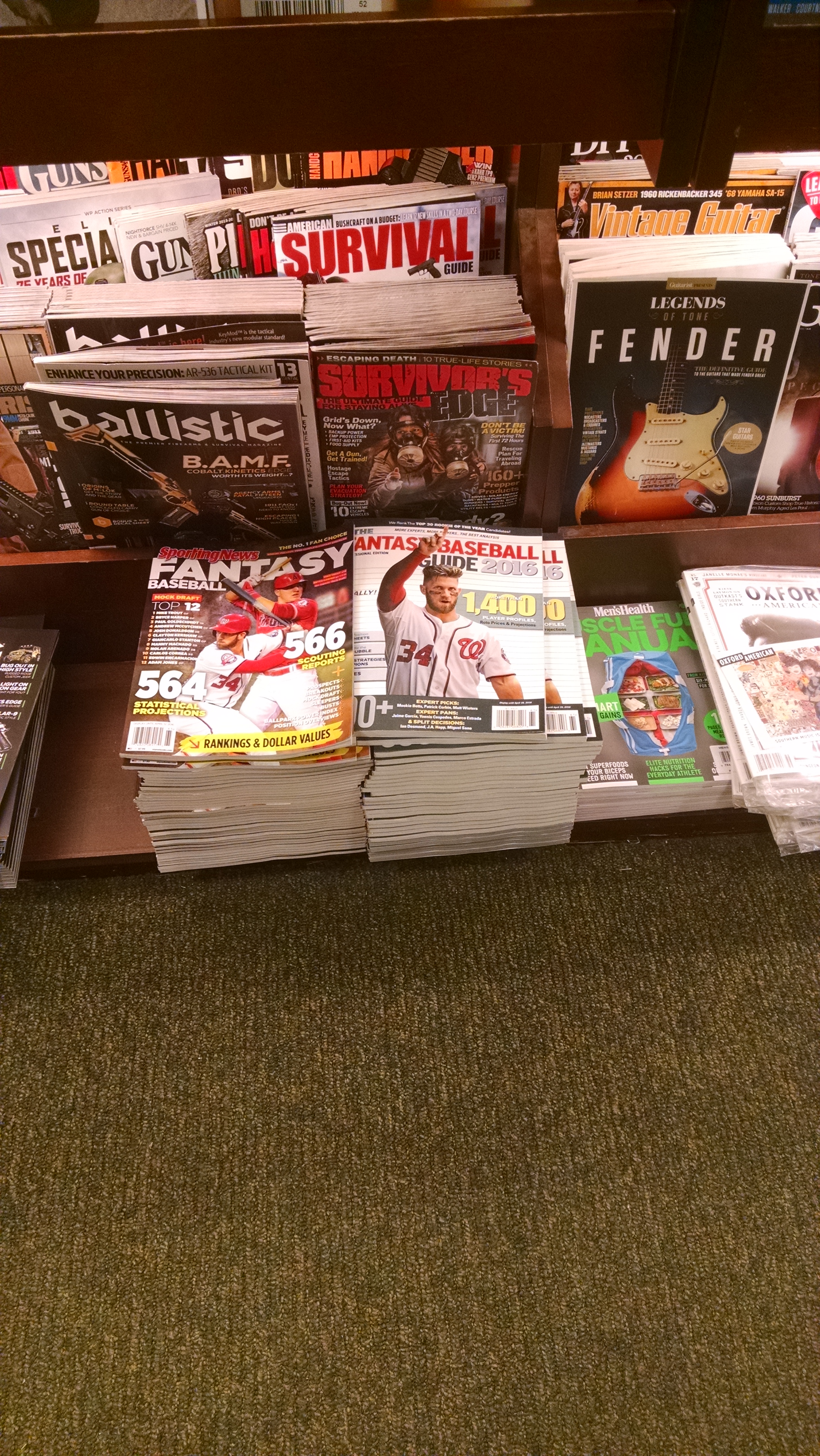The season is over. I finished seventh, and I spent the whole season wondering why my team wasn’t competitive. The answer isn’t obvious.
I wrote about my draft in March here.
I ended up going stars (Mookie, Freddie, Nolan, Buehler, catcher Will Smith) and scrubs (A pitching staff of Buehler (not a scrub), Ian Anderson, Max Fried, Logan Webb) plus Brendan Rodgers for cheap.
I had great pickups. I lucked into Tyler Naquin early (I’d bid way more on Justin Williams and was outbid) and picked up Eric Lauer for cheap, who was very productive when he could pitch.
I accidentally bid up Dansby Swanson because of the online software, but he was close enough for government work. As they used to say generously.
So here’s the problem. I ended up with a very good offense, thank you stars (though not that much Mookie) and Naquin. I hit on all my pitchers, except that the ones I didn’t hit on were horrible, so I had a constant battle between innings and quality. And in the midst of battle, I traded the fading Jurickson Profar for the more massively fading Taijuan Walker, and deserved getting burned, and then traded Buehler for Ozzie Albies because I had a bunch of steals points to gain. But Ozzie didn’t run much in August and September.
So, no steals points, and even after adding Giovanny Gallegos, not too many saves points. That’s a hard road to victory. But I didn’t even get close. Something went gone wrong.
But not really. Kevin Pillar for $2, though his .274 OBP didn’t help at all was an okay fill-in piece. Profar stole nine bases before I traded him in mid-June and only one afterward. Dominic Smith went wrong. I thought I got a steal at $17, but his $8 earnings were not a crushing blow.
One theory I had was that going stars and scrubs meant that I added bad players to fill out the roster, but that wasn’t really true. Eventually, at least. One problem from the draft was that I ended up with an outfield of Pillar, Anthony Alford, Sam Hilliard, Mookie Betts. Not good, but replacing Alford with Naquin early on fixed enough of that.
I ended up with the most at bats in the league and 38 (of 48) hitting points. Offense was not the disaster.
Finishing 11th in steals, however, was. 10 steals would have meant six more points. But six more points would only get me better mediocrity.
When I traded Profar for Taijuan Walker, after much prodding from Walton, my thinking was that Profar had never run this much, I was fifth in steals, and Mookie (injured) wasn’t running yet. Brian and I both knew that Walker was over his head, but I thought he might be okay. He wasn’t.
And you would think his disastrous 78 innings pitched after I acquired him (those are the ones I had him active, I benched him for 12.7 innings of 4.26/0.947 dammit) would have been destroying, but I went from six ERA/WHIP points before the trade to 10 by seasons end.
This is after trading Walker Buehler, who pitched 86.3 innings after I traded him with a 2.61 ERA and 1.042 WHIP. So, I added a bum, got rid of an ace, and still improved my pitching.
How? Logan Webb became a star, I got decent innings from waiver acquisition Rich Hill, Ian Anderson and Touki Toussaint were okay, and Blake Treinen, Brad Boxberger, Chris Stratton, and Giovanny Gallegos were good.
I’ve tried to unwind the moves, to see if I could have made better decisions, and clearly I could have, but it doesn’t work that way. The Draft Day standings tell the story of the teams we bought, and mine wasn’t a contender.

I think this tells the real story. I bought a lot of middle pitchers on the Dodges (Price, Dustin May, Victor Gonzalez, Treinen on reserve) so I didn’t have a ton of innings. Chasing wins and strikeouts I sacrificed ERA and WHIP, and ended up with the same middlin’ team I drafted, just with a different shape. Moving deck chairs around. Maybe if I don’t go chasing pitchers the Naquin pickup and other good decisions would have helped me in significant ways. I don’t know.
What I do know is that Fred Zinkie approached me early in the season and offered me Kenley Jansen for Dominic Smith. In retrospect not making that deal was my greatest blunder, but at the time I still thought Smith was going to rebound and the reason I bet on Price/May/Gonzalez/Treinen was because I thought Jansen might fail.
Zinkie might have lost 10 or even 14 points if we’d made that trade. I might have gained 10. He still would have won, I still would have ended up in the middle.
The answer is better drafts.
Th







